Chocolate in Mexico
Tired from the long flight from NYC to Mexico City, via Cancun , my energy level spiked as I meandered into a Mayordomo chocolate shop at the airport.
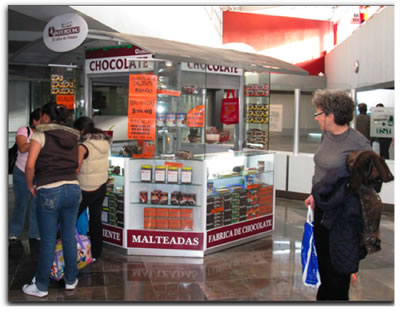
Smelling the recently ground chocolate, marveling at the piles of cocoa beans I aimed directly for several small dishes set out on the counter filled with dark, thick chocolaty pudding with mini-spoons jutting straight up, as if aiming directly for my mouth. Thinking how wonderful that my first taste of Mexico would be chocolate soufflé, I eagerly picked up the little bowl and happily, yes, greedily, stuffed the spoon into my mouth. Instead of the sweet, warm, chocolate soufflé I had expected, I had bitten into a spicy mole . Grimacing, I wanted to spit it out. I hastily replaced the little container on the display case. As I backed out of the store, I saw the attendant removing my mini-spoon, and setting the same bowl out for the next gluttonous customer, with a new mini-spoon!
Despite that first sample of Mexican chocolate, Mark and I did have several enjoyable chocolate moments following that. Indeed after our friends Miriam and Luis picked us up at the bus station in Oaxaca close to midnight—where I again had time to browse in the local Mayordomo shop
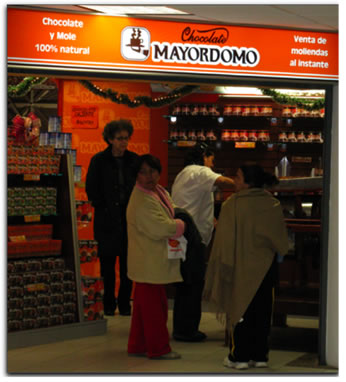
Luis made us a delicious Mexican hot chocolate, a concoction of ground sugar, cocoa beans, cinnamon and almonds that he had milled at his favorite chocolate store.
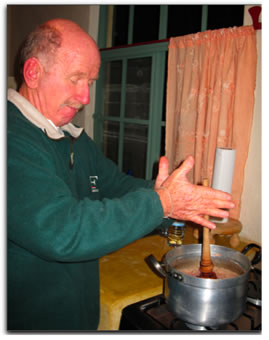
Within 24 hours of our arrival, Luis whisked us to Molinos Y Chocolate in the small town of Tlacolula de Matamoros , where every few weeks, he has the ingredients prepared for his daily hot chocolate. As is the local custom, Luis placed his order with the owner of the very small 2.5 meter square shop, specifying the ingredients and the quantities. Florentine Antonio Andres,
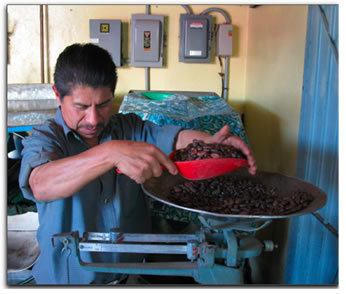
who also grinds coffee beans, combined one kilo cocoa beans (from Chiapas or Tobasco), two large sticks of cinnamon and a few almonds into the loud, electric grinder, which within seconds oozed out the warm, liquid chocolate into the 7.5 kilo sugar waiting in the pan below as you can see in this video Mark took:
Most locals use much more sugar, two kilo sugar to one kilo cocoa. Florentine, who drinks chocolate only a couple of times a week, mixes all of this together by hand (no plastic gloves) and scrapes every drop into a styrofoam container. He promised that the following week he would grind the cocoa with peanuts for us to try.
Back at the house several hours later, we poured the still melty chocolate into a cookie pan, let it cool, and scored it into tablets.

We were contentedly supplied with the makings for our hot chocolate for a week or more of breakfasts. The following Sunday’s outing to the very clean, very orderly but very large Sunday market at Tlacolula, had us tasting new bright orange fruits, tossing back flavorful mezcal , buying hand carved gourds, eyeing the roasted grasshopper piles, measuring two foot long sticks of cinnamon, meandering our way back to Florentine’s shop for the new batch of chocolate. This time, not only did he add the peanuts but he ran the mix through the grinder several times to create more of a powder.

Florentine pays 50-60 pesos for the kilo of cocoa beans and sells it, with sugar and the other ingredients for 120 pesos. To add flavor he sometimes grinds the shell of the cocoa bean into the mix as well. He explained that the grinding stones have to be replaced once a month in the busy Christmas season.
Chocolate contributes to the celebration of Christmas. During the pre-Christmas Soledad processionals through Oaxaca’s downtown, costumed marchers tossed…
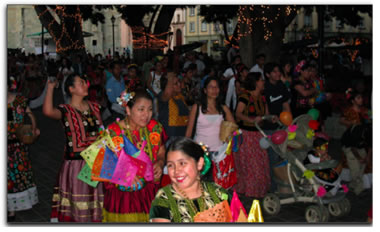
small pellets of ground chocolate wrapped in pastel tissues tied with ribbon to the viewers.
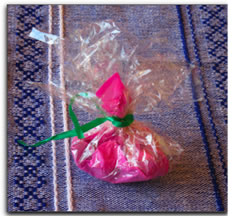
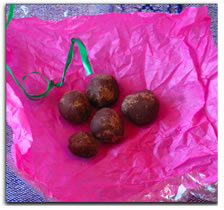
In Oaxaca proper we saw several stalls where chocolate was ground to order in and around the food markets. The larger, local companies such as Soledad, Mayordomo and Guelaguetza also sell packaged bars—mostly for drinking chocolate, as well as mole, chocolate covered coffee beans, and small bars for eating. On Mina Street Soledad and Mayordomo alternate several stores, with Guelaguetza just around the corner. The street offers several chocolate grinding opportunities.
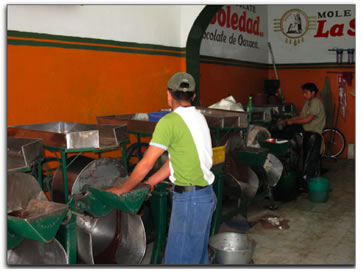
I hear that Mayordomo plans to open a museum. Because they produce under rabbinic supervision, with a hechsher , I brought Mayordomo chocolate bars for tasting at the Hazon Food Conference in Asilomar and for my Reform colleagues at the Pacific Association of Reform Rabbis.
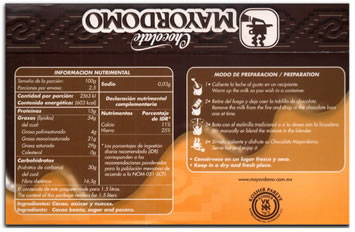
While exploring in Mexico, we found very little eating chocolate. Yes, in Mexico City the Ferbach store next to our hotel sells it, L’atelier du chocolate takes orders, and the Sanborn’s department store showcases truffles. However, every restaurant, or café offered drinking chocolate, made either with water or milk. It was very hard to resist the local custom of dunking a pastry or a churro in it. At the end of the trip, we agreed that our favorite hot chocolate was Luis’s with that at Café Tacuba taking a second place. Café Tacuba, in the capital, memorializes the place of chocolate in Mexican and Old World culture through its beautiful murals.
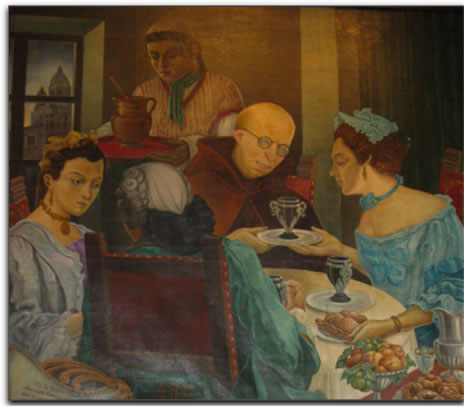
The lower left corner has some text (translated by Miriam):
Europe transforms the cocoa into tiny delicacies—subtle, finely worked, and decorated—whose shiny surfaces give off brilliant flavors and aromas.
Inside, soft fillings, white foam; solid portions of dried fruit, liquidy creams with alcoholic flavors, crispy bits, delicate fresh and juicy fillings.
But the tradition of soaking up the chocolate with churros, cookies and sweet rolls—asemitas, cocoles, chimisclanes, and chilindrinas—has not been lost, and here in this "Café Tacuba" the chocolate makes a beautiful, soft foam as stipulated by [the Aztec god] Quetzalcoatl.
Author of posters, José Luis Curiel
For two rabbis Mexico City on Christmas Eve presented a bit of a dilemma. We decided to attend a mass at the Cathedral and follow that with a hot chocolate at El Moro, well known to locals as a chocolate only café (with a selection of four types of chocolate) open 24/7/365. We double checked earlier on the 24th that it would indeed be open later that night. We arrived at El Moro after the mass. To our huge disappointment, it was closed.
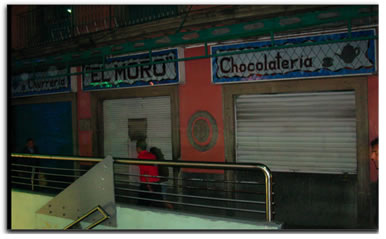
2 thoughts on “Chocolate in Mexico”
Leave a Comment
Recent Posts
-
On the Chocolate Trail in Bariloche, Argentina
In March, Mark and I finally extended our chocolate trail explorations in celebration of our special anniversary to Bariloche…via Miami, Buenos Aires, Ushuaia, Antarctica, and Buenos Aires again. There were international flights, a cruise, a couple of domestic flights to get there. All of the travel was amazing, but Bariloche, sometimes called the chocolate capital
Read more › -
Sunday Yeast Polemics: On the Bread Trail
Leavened bread or not? While some of us may think of Passover, the question applied to Eucharistic bread and created significant division in the early Christian Church. The leavened bread for Sunday use was often baked at home by women. Over time, preferences shifted to clergy, church-produced, breads… and, the Eastern Orthodox Church preferred a
Read more › -
Sweet Treat: Chocolate and the Making of American Jews
You may wonder: how did chocolate help define American Jews? Through chocolate, we see that Jews were part of America since its earliest days. Well, since 1701 at least, Jews in the Colonies made part of their living through chocolate. Several Sephardim, leaders of their New York and Newport Jewish and secular communities, participated in
Read more › -
How About Some Uterus Challah?
When Logan Zinman Gerber felt enraged about the loss of reproductive rights in the U.S., she baked challah. Not any challah. She shaped it into a uterus. It wasn’t long after the birth of her daughter that Gerber, a longtime challah baker and staff member of the Religious Action Center of the Reform movement, considered
Read more ›
Some Previous Posts
(in alphabetical order)
- "Boston Chocolate Party" Q&As with Deborah Kalb
- 2022 Media for The "Boston Chocolate Party"
- A Manhattan synagogue explores the rich, surprising history of Jews and chocolate
- About Rabbi Deborah Prinz
- Baking Prayers into High Holiday Breads
- Boston Chocolate Party
- Digging into Biblical Breads
- Exhibit Opens! Sweet Treat! Chocolate & the Making of American Jews
- For the Easiest Hanukah Doughnuts Ever
- Forthcoming! On the Bread Trail
- Funny Faced Purim Pastries
- Good Riddance Chameitz or, The Polemics of Passover's Leaven
- How About Some Uterus Challah?
- Injera*
- Jewish Heritage Month: Baseball & Chocolate!
- Matzah - But, the Dough Did Rise!
- Plan a Choco-Hanukkah Party: 250th Anniversary Tea Party
- Prayers Into Breads
- To Shape Dough: A Trio of Techniques
Archives
2025
▾- All
2024
▾- January
- February
- March
- May
- July
- All
2023
▾- March
- April
- May
- June
- August
- November
- December
- All
2022
▾- February
- April
- November
- December
- All
2021
▾- March
- April
- October
- November
- All
2020
▾- April
- May
- June
- October
- December
- All
2019
▾- January
- February
- April
- May
- July
- August
- September
- October
- December
- All
2018
▾- February
- March
- April
- May
- July
- September
- October
- November
- December
- All
2017
▾- January
- February
- March
- July
- September
- October
- November
- December
- All
2016
▾- January
- February
- March
- May
- July
- August
- October
- November
- All
2015
▾- January
- February
- March
- May
- June
- July
- September
- November
- All
2014
▾- February
- April
- May
- June
- August
- September
- November
- All
2013
▾- March
- April
- May
- June
- July
- September
- November
- All
2012
▾- January
- February
- March
- April
- September
- October
- November
- December
- All
2011
▾- April
- July
- August
- October
- November
- All
2010
▾- January
- February
- April
- July
- August
- September
- October
- All
2009
▾- January
- June
- July
- August
- October
- All
2008
▾- August
- September
- October
- November
- All
2007
▾- January
- June
- July
- All
2006
▾- November
- December
- All
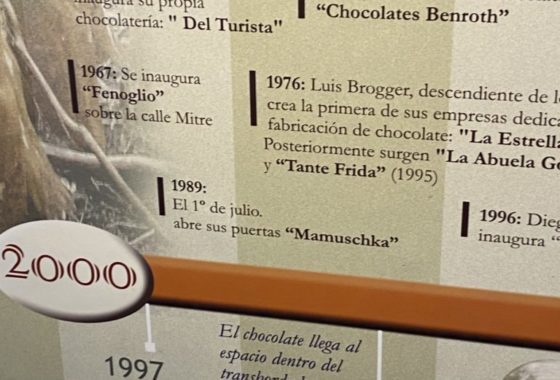
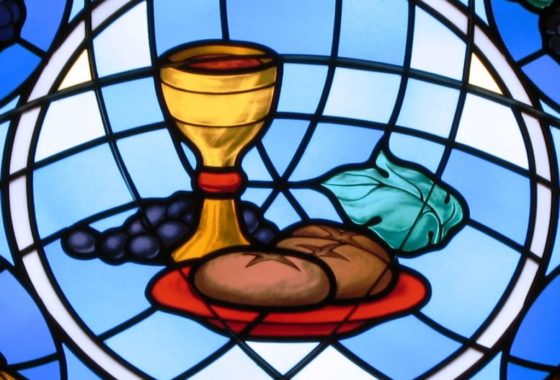
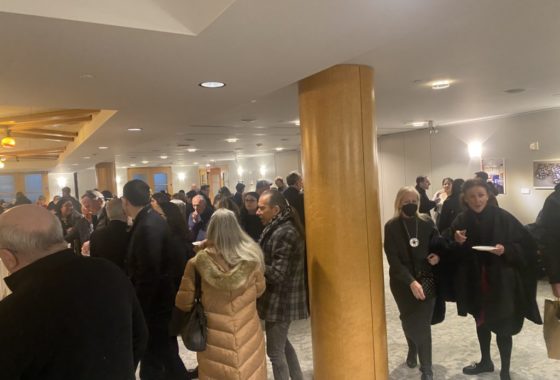

Bonjour,
Comment et ou acheter du chocolat Mayordomo en France et ailleurs
Merci de votre réponse
Bonjour! I am not aware of Mayordomo in France. However you could go to the Mayordomo website and perhaps order directly from them. Bon chance! Debbie